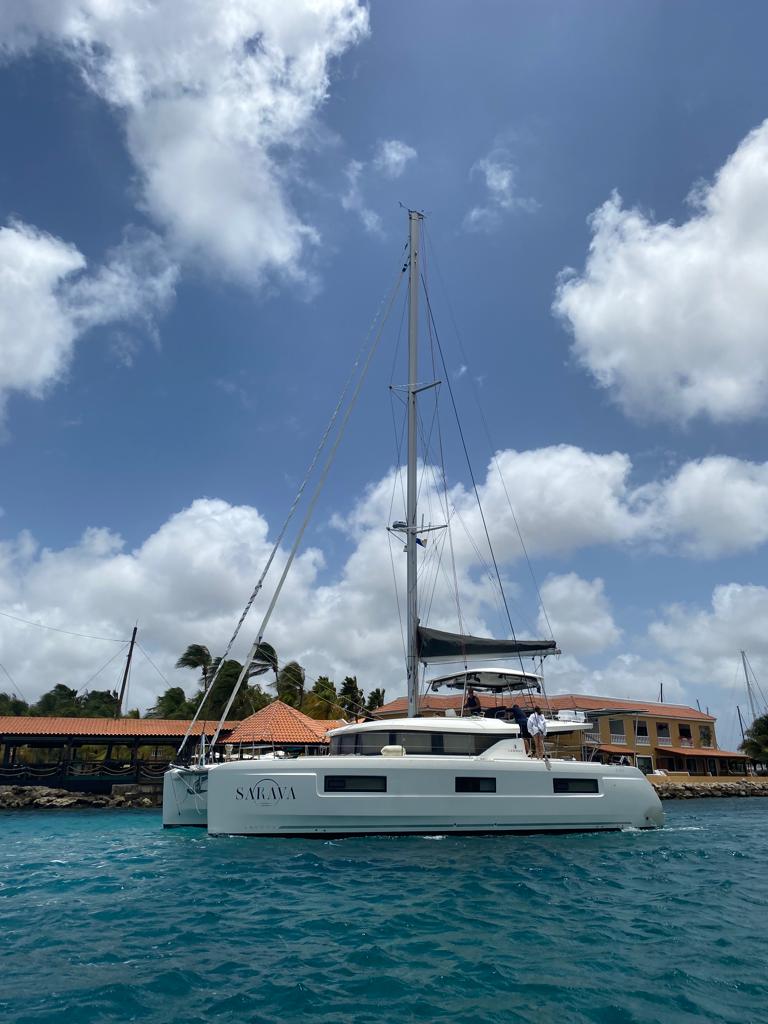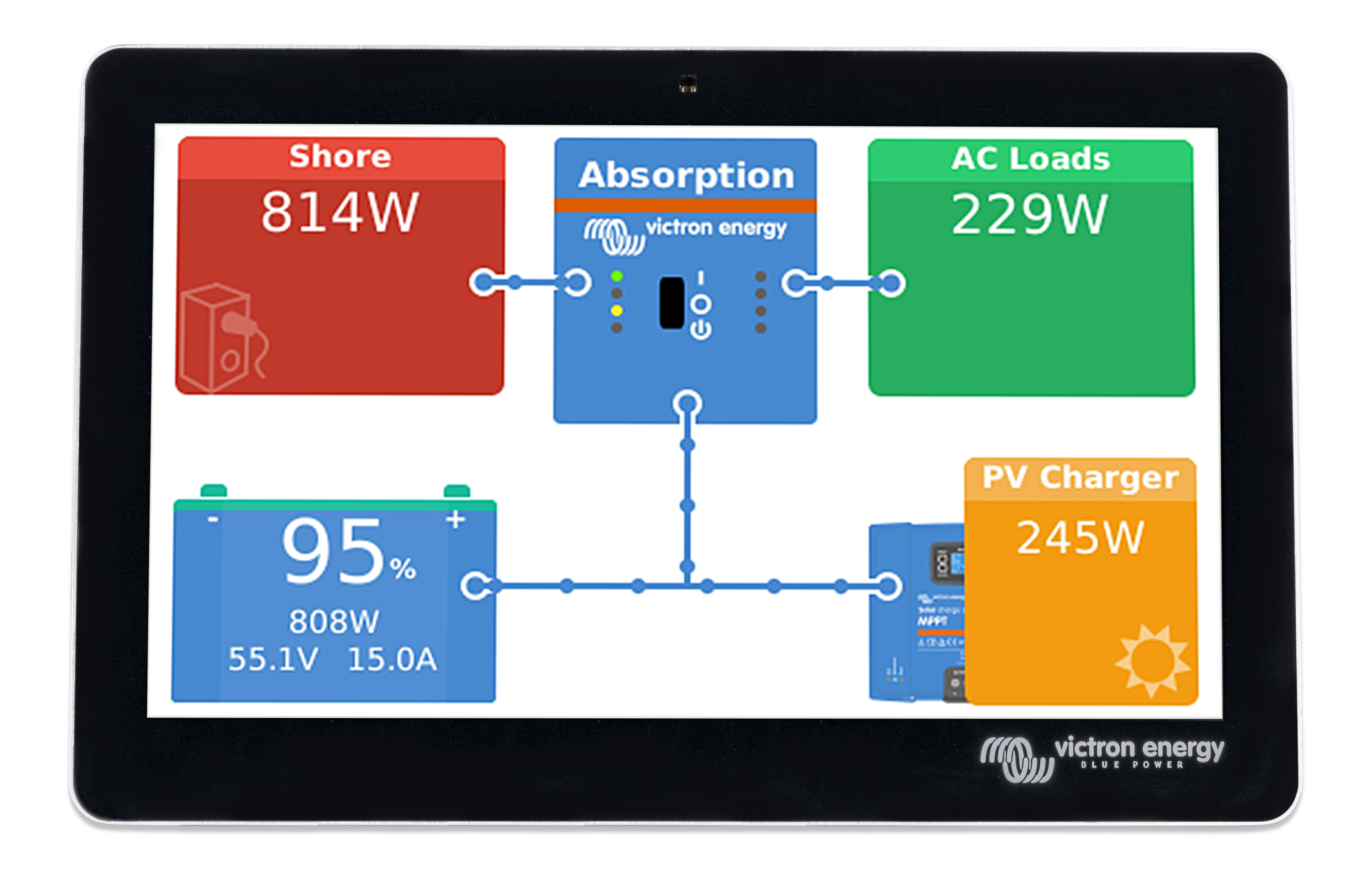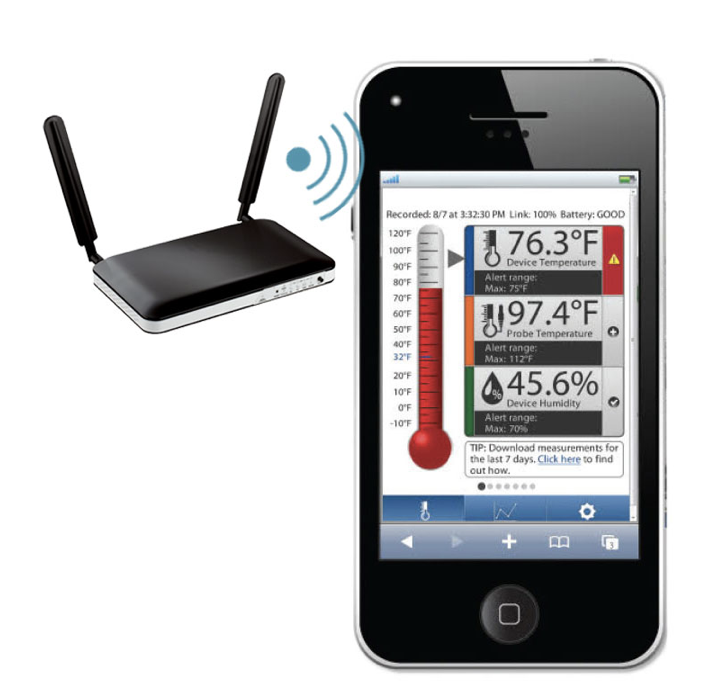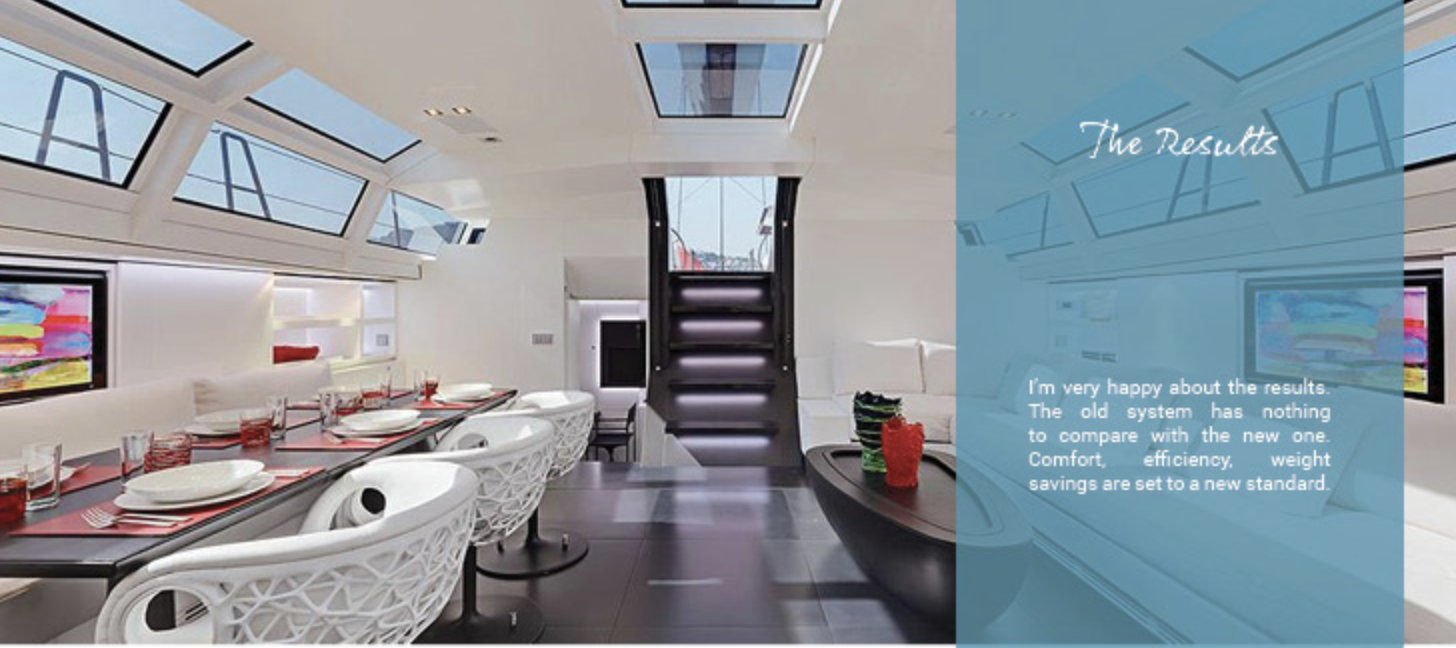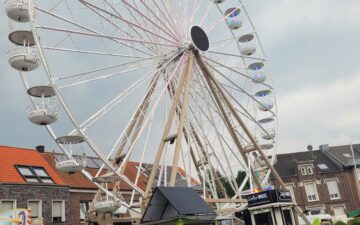
From on board his 46 foot Catamaran Sarava, Mark and his family enjoy diving in the blue seas of the Caribbean around their home port of Bonaire – one of the Leeward islands.
In fact, if there’s a problem at all in paradise it’s that some days are just too hot.
Until recently whenever Sarava was at sea under sail, or at an island anchorage far from the electricity grid, skipper and crew were faced with a choice between turning off the air conditioning, starting the engine, or running a noisy generator. The power demands of his old Heating Ventilation and Air Conditioning (HVAC) system were difficult to meet from the DC battery bank.
Must there always be a compromise between comfort and adventure? Not any more, it seems:
Realising that there had to be a solution out there somewhere Mark did some research and came across an innovative Variable Refrigerant Volume HVAC system made especially for the marine market by Termodinamica. In fact Variable Refrigerant Volume (VRV) technology is well established in land-based HVAC applications but its maritime use is only just beginning.
How does it work?
Unlike traditional systems which circulate chilled water, VRV systems channel refrigerant directly to individual air handlers in each zone, evaporating it only where needed. This localized approach eliminates energy losses, and significantly boosts system-efficiency.
Hunter Parker of Termodinamica says:
Our VRV system employs a “Capacity on Demand” philosophy. The system adjusts its cooling output to meet real-time demands. It has Variable Speed Compressors, allowing for precise control over cooling output. And it employs Zoning Control, whereby a central management system directs cooling capacity to specific zones as needed.
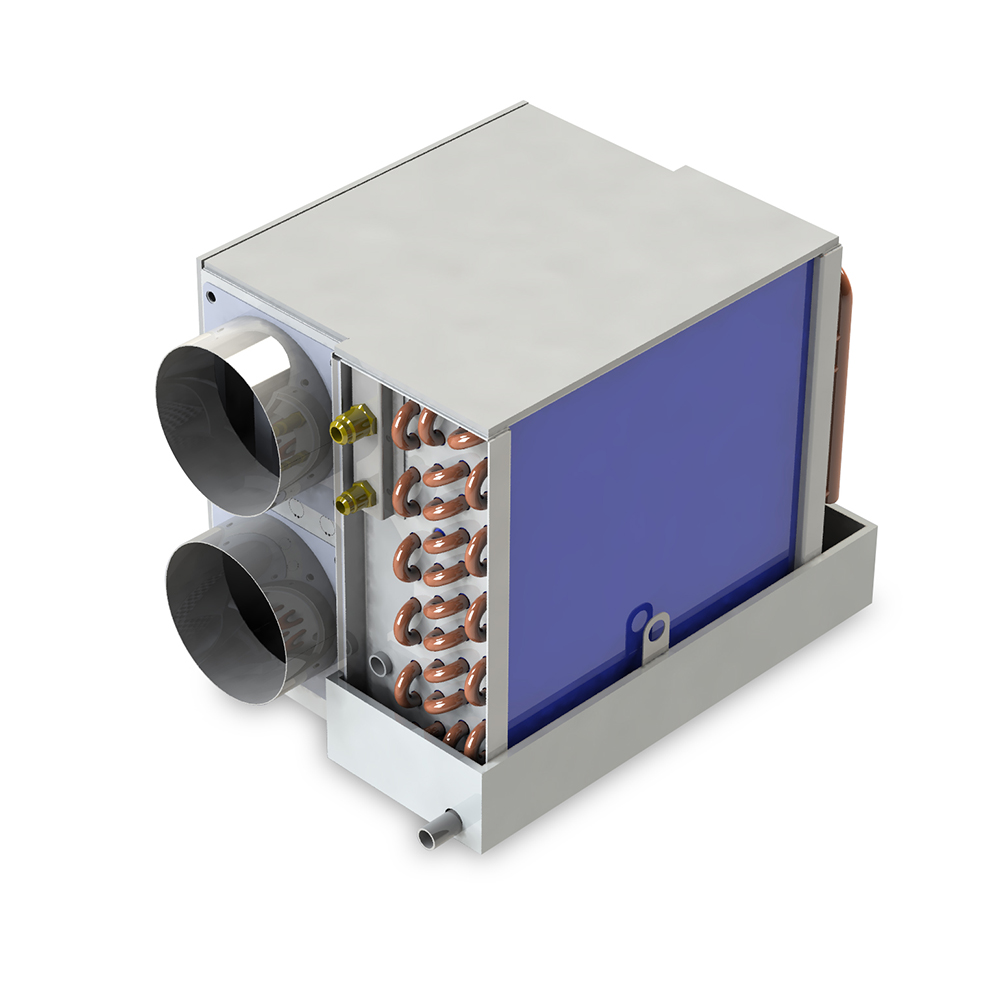
With the capability to rapidly cool spaces, software-driven Variable Capacity Air Handlers adjust their output to match cooling demands – up to their maximum BTU output – and then maintain set-points with minimal energy. The efficiency of the system allows for operation on battery power alone in this example.
Utilizing modulated refrigerant flow and eliminating the need for a chilled water loop, the system achieves energy consumption reductions of up to 70% compared to traditional on/off chilled water loop systems. Hunter explains.
All new utilities and power supply
The previous power-hungry air conditioning system – along with refrigeration, air compressors, domestic appliances and navigational devices – had to be managed to eke out power reserves, even on short voyages. Even after upgrading to a new Lithium battery system, the skipper and crew aboard yacht Sarava found they still had limited AC run times when using battery storage.
But with the new HVAC system the vessel runs from battery for 24 hours. A happy balance has been achieved between efficient energy harvest and storage, and manageable power demands.
The power supply – which was installed by Maz Ocean Marine Electronics Installation – consists of:
- 2 x Inverter/Chargers: MultiPlus 24/3000/70-50 120V. Ultra reliable AC power supply, AC battery charging, current limit, and power assistance for high loads.
- 5 x Solar Panels: Sun Power 410 Watt each
- 5 x Solar Charge controllers: BlueSolar 150/70
- 24V Secondary Alternator 60A
- 2 x External alternator regulators: Wakespeed 500
- Lithium Smart Battery Management System: Lynx Smart BMS
- Busbar, fuse, cable management: Lynx Distributor
- Communication device: Cerbo GX – system data, history, and programming from anywhere in the world.
- User touch screen interface: GX Touch 50
- Energy storage: 4x Lithium Battery Smart 12.8V, 330Ah
- AC Power transformer: Autotransformer – 120/240VAC, 100A
- GEN AUTO START (custom relay for Onan generator)
Termodinamica also offer high voltage DC versions of their systems. Typically these are 700VDC – but custom high DC voltage installations can also be configured.
HVAC Build Quality – for the marine environment
On board Sarava there are 2 x VRV8 Compressors with an output of 35,000 BTU each and a total of 6 air handlers located throughout the vessel’s accommodation.
As any marine engineer will tell you the marine environment presents unique challenges to a vessel’s gear and systems. In the pursuit of excellence marine-grade components – such as Grade 2 Titanium – have been used for Termodinamica’s condensers, together with 316L Stainless Steel for the air handlers, compressors, and other components.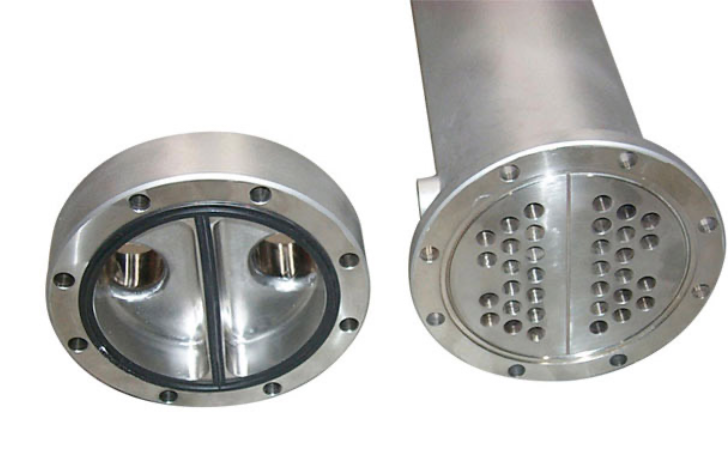
But there’s more to the system than great hardware; advanced software management offers both automatic system control and adaptability to respond to user-inputs: A Power Management Slider Bar provides temporary limitations to power consumption during periods of high-demand – from the galley, perhaps – ensuring that the total power load can be managed effectively. That’s critical for vessels with limited inverter capacity.
The system also features remote connectivity and control, allowing remote diagnostics and troubleshooting right from Termodinamica’s HQ – which reduces or eliminates the need for a technician visit.
Electric Drive – powering the next generation
In commercial vessels and pleasure boats, reduced emissions and sustainable propulsion are coming under the microscope. As the marine industry moves toward electric propulsion, systems efficiency and load management elsewhere on board become vital so as to extend the vessel’s battery stored energy.
Termodinamica’s VRV system with its reduced HVAC loads, offers the potential for extended range under sail.
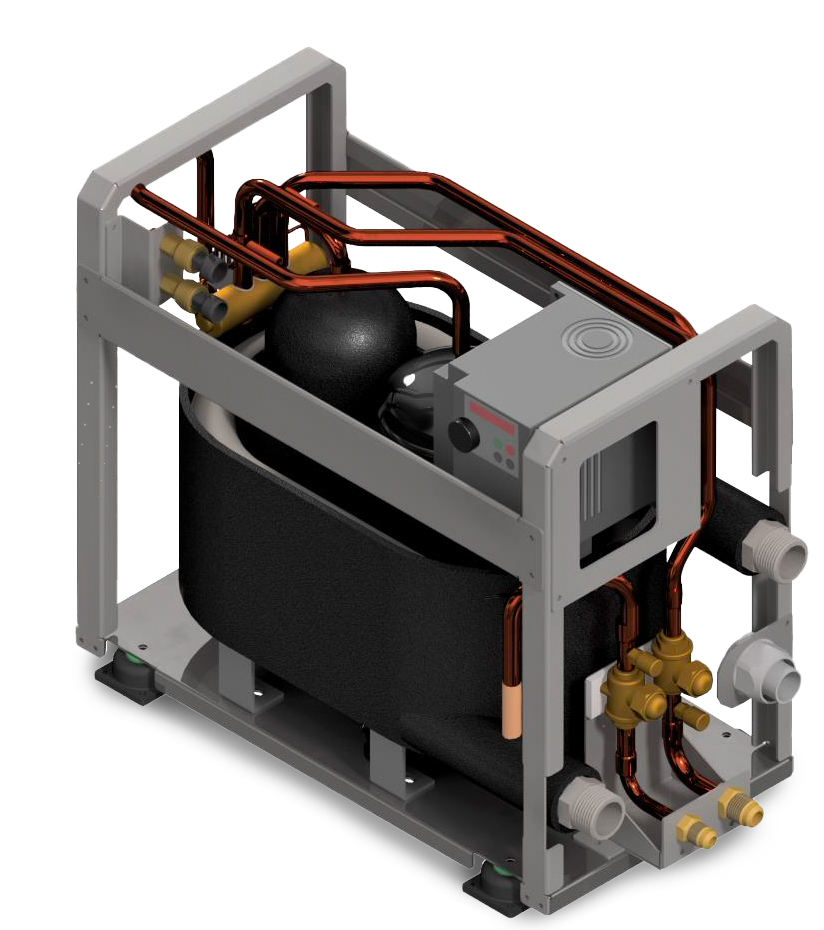
Efficiencies already achieved allow for smaller, less expensive back-up generators to run devices. Lithium batteries – with their high charge-acceptance rates – will be topped-off more quickly by the alternator during pilotage at the beginning and end of voyages … or whilst at anchor when the engine is often run solely to wring some charge out of the alternator. Shore power costs – often charged at a premium – are also reduced.
Mark says: Finally I can sleep on my damn boat with air conditioning and no noisy generator!
During the day – with an ambient temperature of 90°F (32°C) – keeping the vessel cooled to 74°F (23°C) inside draws about 1300Wh …less at night.
The peace and tranquility on our vessel have been significantly enhanced. We can now operate all our systems on lithium battery and solar power, making the need for a generator almost entirely obsolete. Living life on the boat has never been more sustainable – or enjoyable.
If you sail in hot climates and are building a new vessel or considering a retrofit, Termodinamica’s VRV system might provide just the ambiance you’re hoping to achieve.






